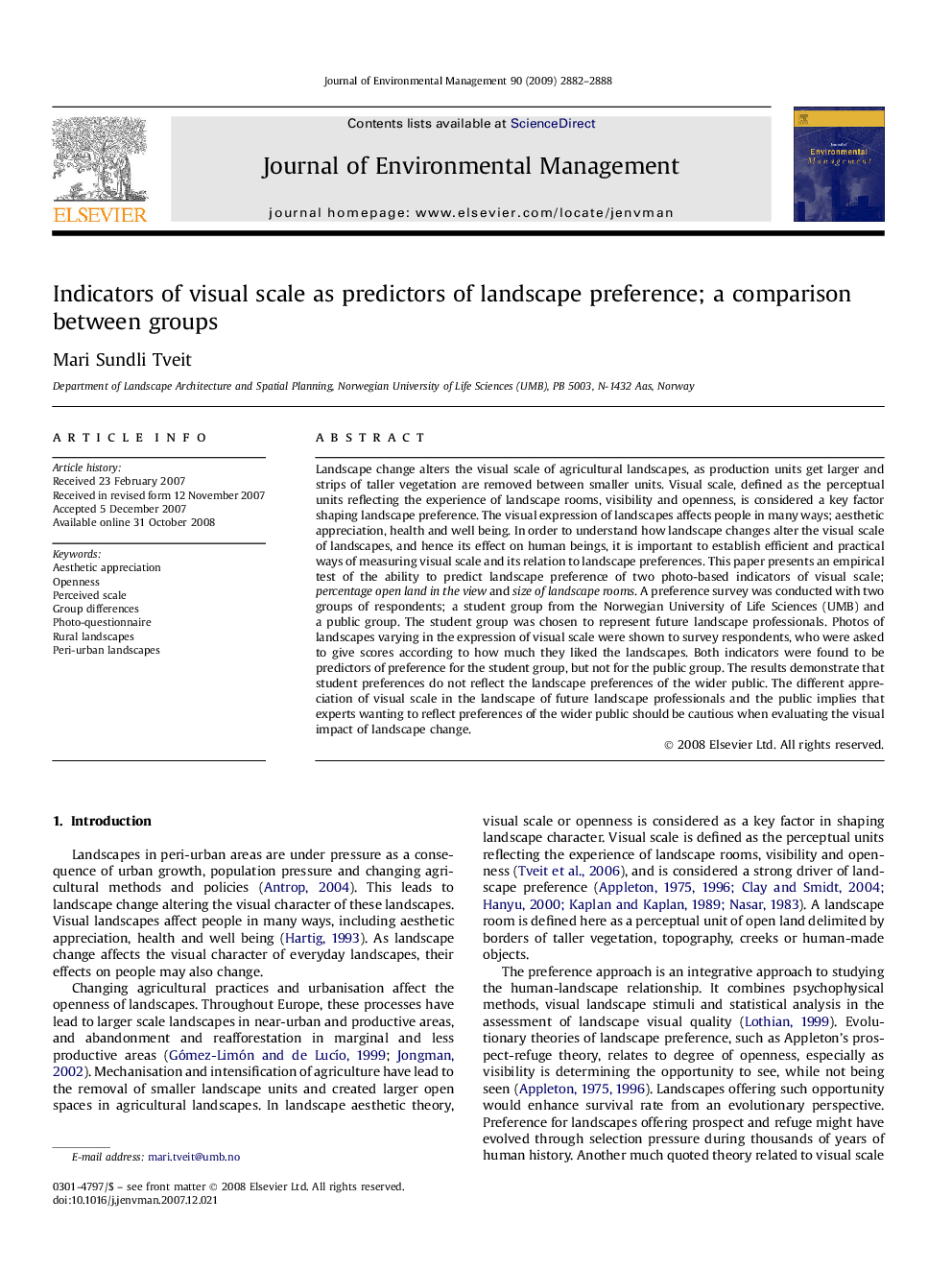| Article ID | Journal | Published Year | Pages | File Type |
|---|---|---|---|---|
| 1057631 | Journal of Environmental Management | 2009 | 7 Pages |
Landscape change alters the visual scale of agricultural landscapes, as production units get larger and strips of taller vegetation are removed between smaller units. Visual scale, defined as the perceptual units reflecting the experience of landscape rooms, visibility and openness, is considered a key factor shaping landscape preference. The visual expression of landscapes affects people in many ways; aesthetic appreciation, health and well being. In order to understand how landscape changes alter the visual scale of landscapes, and hence its effect on human beings, it is important to establish efficient and practical ways of measuring visual scale and its relation to landscape preferences. This paper presents an empirical test of the ability to predict landscape preference of two photo-based indicators of visual scale; percentage open land in the view and size of landscape rooms. A preference survey was conducted with two groups of respondents; a student group from the Norwegian University of Life Sciences (UMB) and a public group. The student group was chosen to represent future landscape professionals. Photos of landscapes varying in the expression of visual scale were shown to survey respondents, who were asked to give scores according to how much they liked the landscapes. Both indicators were found to be predictors of preference for the student group, but not for the public group. The results demonstrate that student preferences do not reflect the landscape preferences of the wider public. The different appreciation of visual scale in the landscape of future landscape professionals and the public implies that experts wanting to reflect preferences of the wider public should be cautious when evaluating the visual impact of landscape change.
